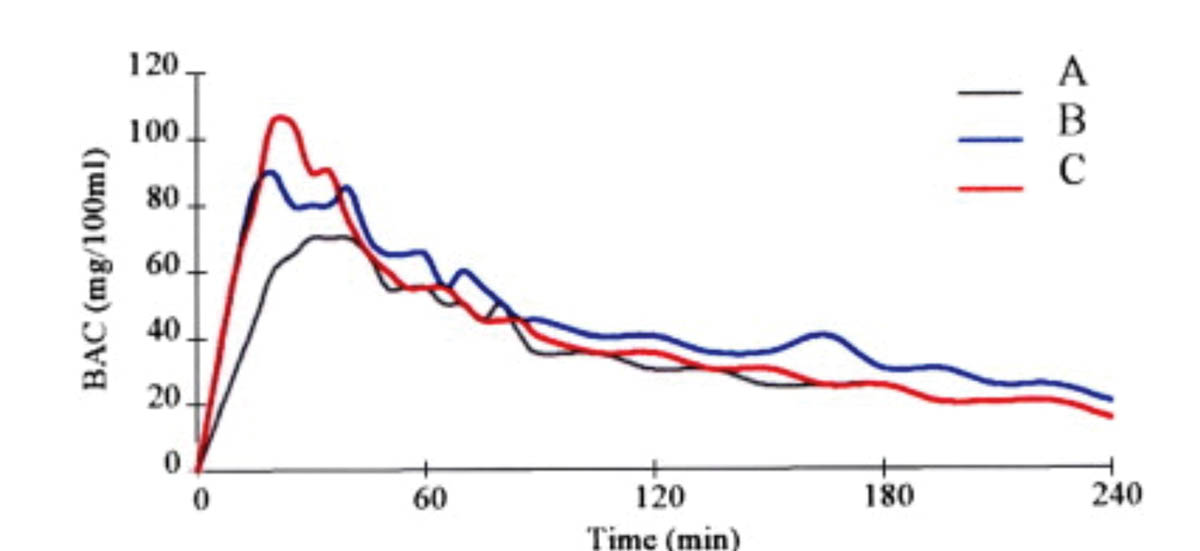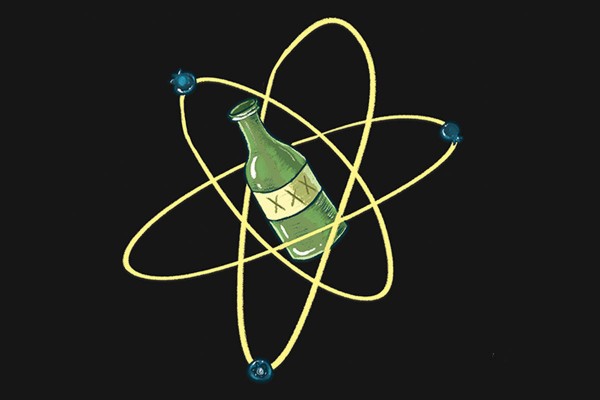Alcohol is a chemical drug, and our bodies are biological machines. When you put too much of that drug into your body, it becomes difficult for the machine to function properly. And even though our bodies process alcohol subconsciously, there are a few decisions you can make to help your biological machine out quite a bit. Critic consulted Pharmacy students and staff, and public health researchers for some practical and scientific advice on how to drink.
Avoid Energy Drinks While Drunk
The Science
Alcohol is a depressant. It makes you drowsy and works to slow your heart rate. To counteract this, you might be tempted to have an energy drink. This is not a good idea.
By blocking adenosine receptors in the brain, chemicals like caffeine mask the drowsy symptoms of alcohol without actually nullifying the effects. These chemicals also speed up your heart rate. Combining depressants with stimulants sends mixed signals to your heart and puts it under increased strain, putting you at risk of developing arrhythmic heartbeats.
The Practical Advice
The best way to counteract the sleepy feeling you get while drinking is simply to drink less. Energy drinks affect your body, but by keeping that body awake longer, they also give you more time to make stupid decisions. A vodka Red Bull may not immediately give you heart problems, but it will keep you awake for enough time to buy another few drinks and send some questionable texts, leading to heartache in more ways than one.
Also, unrelated, but alcohol fucks with the density of your inner ear fluid, which controls balance. This is why you get the spins.
Eat Fruit
The Science
When you digest alcohol, organic compounds called “free radicals” proliferate in your body, and they’re part of what makes you feel shitty the next day. Your body uses antioxidants like vitamins A, C, and E to deal with free radicals, and you can replenish your supply of antioxidants by eating lots of berries or other nutrient-dense fruits. Electrolytes also help the recovery process.
The Practical Advice
Sometimes clubs have containers of fruit behind the bar. While it’s tempting to reach over and help yourself, do not do this. It is rude. I suggest you BYOB (bring your own berries) to be safe. Stuff your pockets with blueberries before hitting town as a convenient snack and offer them to strangers on the dancefloor. If you’re in a bar and they offer nuts ‘n stuff, eat them. Your body will thank you.
Avoid Fizzy Drinks (Most of the Time)
The Science
The graph below shows the rate at which the same amount of vodka was absorbed by people who drank it mixed with still water, fizzy water, or straight. Carbonation seems to increase the rate of absorption, meaning fizzy alcoholic drinks “hit” you faster. Spirits take longer to enter the bloodstream when taken straight than they do in a mixed drink, assuming both drinks are ingested over the same amount of time.
Alcohol seems to enter the bloodstream fastest when the drink’s concentration is around 20%. Generally, your body can process one standard drink per hour, which would put you at the upper legal limit for driving. If you double the standard drinks per hour, though, you more than double the concentration of alcohol in the bloodstream, so be careful when counting your drinks.
Digesting ethanol produces sugars, which contributes to raising your blood sugar level. Sugar seems to slow the rate at which stuff passes from the stomach to the large intestine, where most alcohol is absorbed. Highly sugary mixers were correlated with lower breath alcohol levels. If you have type 1 diabetes, be aware that your blood sugar levels will plummet when drinking, as your liver will be too busy processing alcohol to produce glucose.
The Practical Advice
There are heaps of variables at play here, so it’s hard to say what holds true for everyone. It’s best to know your personal limits, and stick to those limits regardless of how or what you’re drinking. Like with cars, everyone's biological machine ticks a bit differently.
That being said, there are some small changes you can make to mitigate some of the effects of the drug you’re ingesting. A noncarbonated gin and juice, for example, will hit you slightly slower than a gin and tonic, and provide some vitamin C to boot. Drinking diet mixers would lead to faster absorption rates, as your stomach would not have to digest sugars or carbs at the same time as the alcohol.
Also, while low-percentage drinks, like beers, are generally safer than spirits, the higher volume of liquid taken in makes you pee more. This dehydrates you faster and means you’ll have to drink more water to avoid feeling like shit the next day.
Regardless of the mixer, if you’re drinking on an empty stomach, your alcohol absorption rate will skyrocket. Make sure you fill your stomach with more than just alcohol if you don’t want to give your liver more than it can handle.

Key:
A – Straight alcohol (37.5 vol%).
B – Alcohol diluted with water (18.75 vol%).
C – Alcohol diluted with carbonated water (18.75 vol%).
Citation: Roberts & Robertson, 2007. Journal of Forensic and Legal Medicine. 14, 7. 398-405.
Think About Your Meds
The Science
Meds and booze both interact with the liver and the brain. Your liver works to detoxify your blood better than a juice cleanse could ever hope to, but it can only work so fast. By drinking too much too quickly, you create a queue for liver processing. While alcohol molecules wait in this queue, they damage the cells around them. By combining alcohol with liver-processed medications, you make this queue even longer, and increase the risk of liver failure, though your liver will prioritise the alcohol.
Once in the bloodstream, alcohol heads to your brain. Your brain is protected from harmful agents by its own sort of N-95 mask: the blood-brain barrier. This physical barrier prevents some chemicals and bacteria from reaching your think-tank, but not alcohol, and not any other drugs that have an effect on the brain. Once in the brain, this cocktail of drugs can have a variety of effects, not all of which are dangerous.
When taken together, sedative drugs like alcohol and benzos like Xanax produce an effect that is more than the sum of their parts. This synergistic effect can lead to prolonged blackouts and inhibited consciousness, to the point where you may not continue to breathe. The antibiotic medronizonale, prescribed for dental work and STIs, will produce a killer hangover even with only a few standard drinks.
The Practical Advice
Not every medicine is dangerous to combine with booze, and if you’re on a prescription, just ask your health professional for personal advice. However, no matter what medication you’re on, remember that your normal alcohol limits will not be the same as when you combine booze with another drug.
Often, drugs like antidepressants will make you drowsy or dizzy in the same way alcohol will, and combining the two can increase this effect dramatically. If you must combine painkillers and booze, go for ibuprofen. Many painkillers like paracetamol are processed through the liver, but ibuprofen is passed through the kidneys.
You can endanger yourself without any chemical interactions. For example: your birth control pill may not have a harmful chemical interaction with booze, but if you take your pill at 9pm and then spew on a night out, that pill might not have had time to fully absorb, and now you’ve missed a dose. The behavioural effects of med-booze combinations can be just as dangerous as the chemical effects.
To Summarise
None of the experts Critic consulted had any problems with alcohol, nor did anyone suggest avoiding it entirely. Problems and dangers arise when personal limits are exceeded and alcohol is combined with other substances in an uncontrolled environment. Everyone’s different, so know your personal limits, and definitely don’t drink if you’re on benzos.



